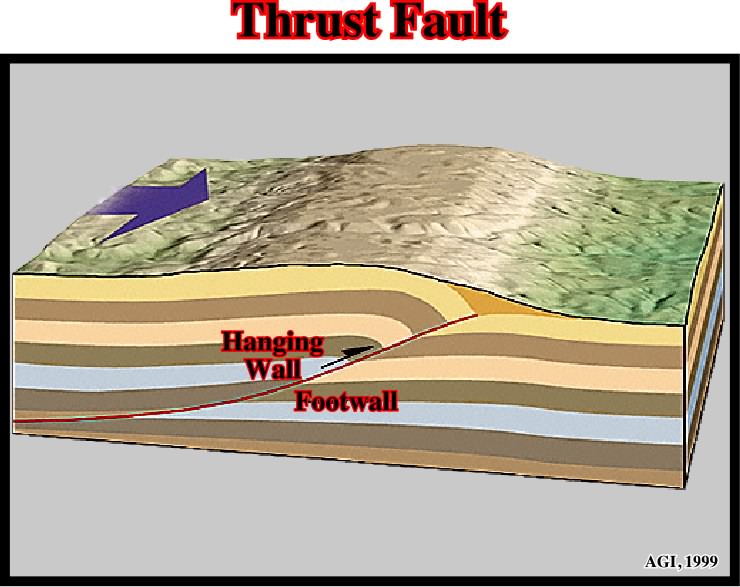How can older rocks be found on top of younger rocks in a cross-section?
1 Answer
Jun 4, 2016
Mountain landslides, erosion by meandering and major rivers, and volcanic eruptions turn the natural strata topsy turvy..
Explanation:
Landslides turn the layers upside down. Volcanoes bring out inner
rocks as lava. Meandering rivers and major rivers (through mountain
slopes and canyons) disintegrate interior rocks and transport them
downstream to the riverbed.
However, the most common mechanism to produce older rocks on top of younger is by thrust faulting. Thrust faults form where rocks are being compressed, usually by plate tectonic mechanisms. Thrust faults rip up older strata and pile it on top of younger rocks. See pic.


